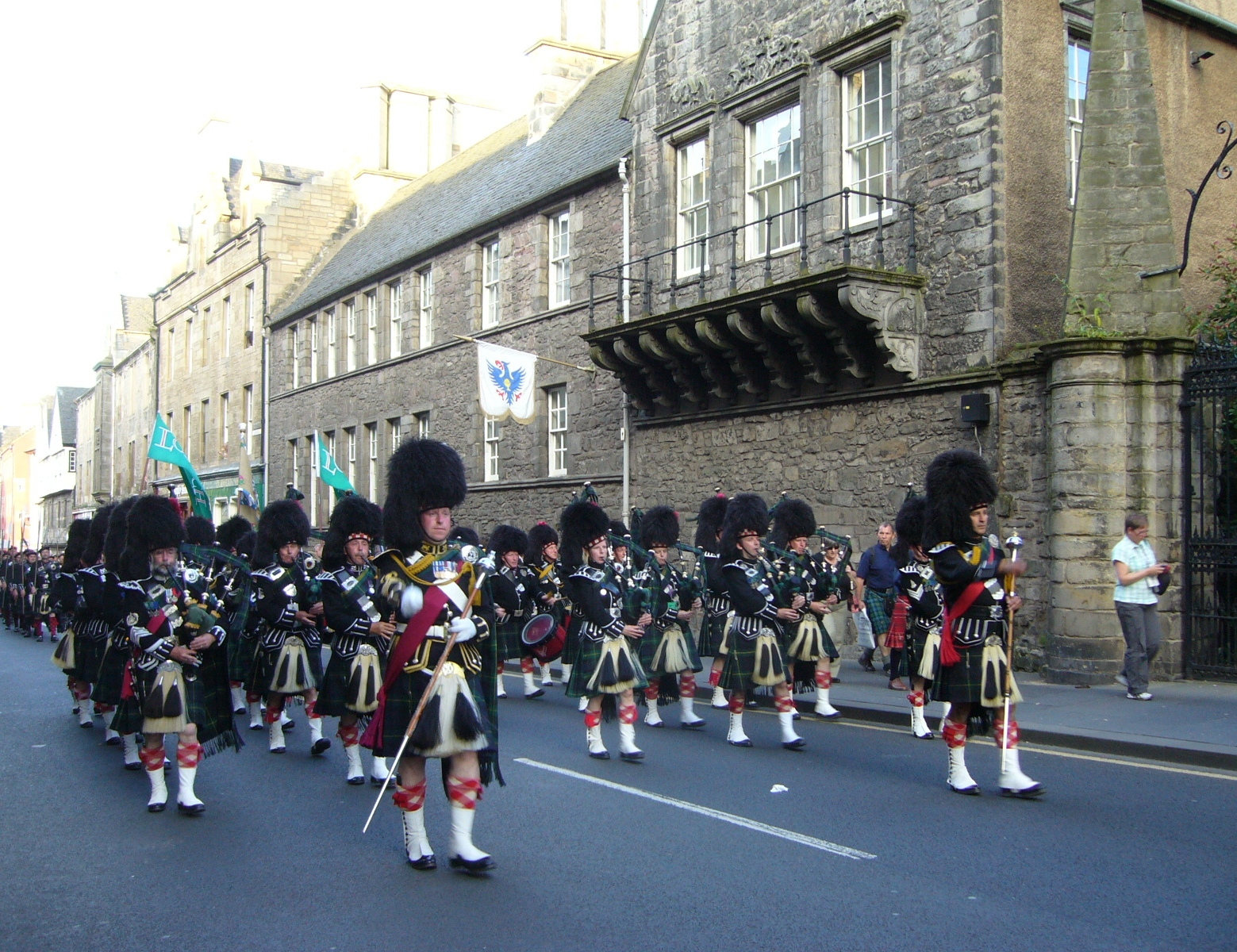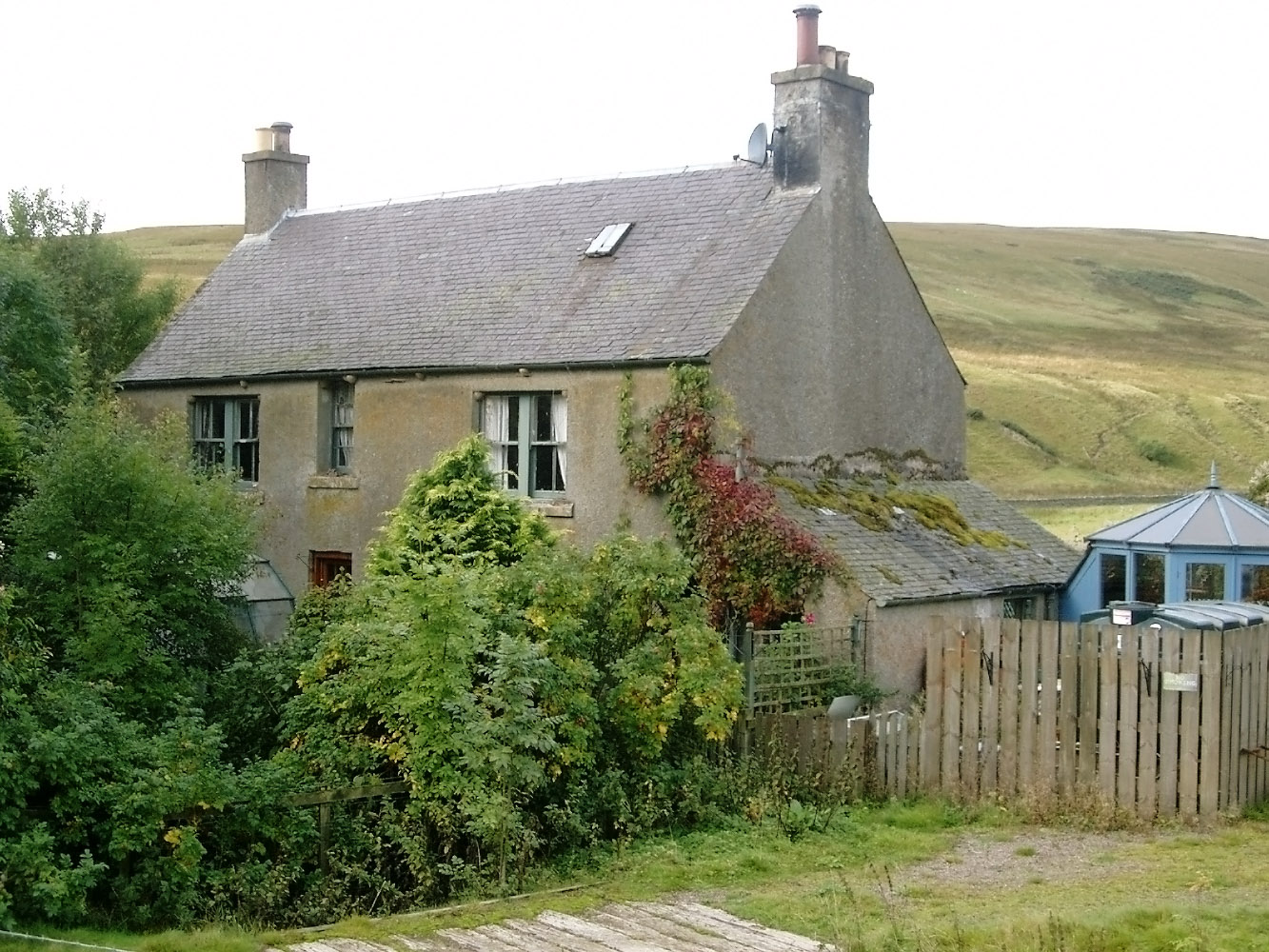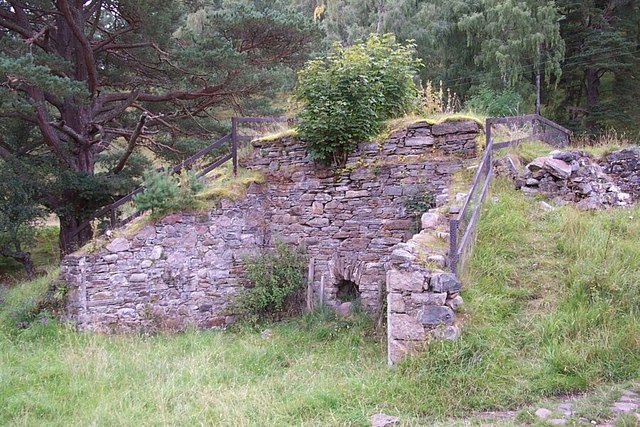|
Haughs Of Cromdale
The Battle of Cromdale took place at the Haughs of Cromdale on 30 April and 1 May 1690. The site is on a hillside near the village of Cromdale, then in Inverness-shire and now in the Highland council area. The battlefield has been included in the Inventory of Historic Battlefields in Scotland and protected by Historic Scotland under the Scottish Historical Environment Policy of 2009. Background After their defeat at the Battle of Dunkeld in 1689, the Highland clans had returned to their homes in low spirits. Sir Ewen Cameron assumed control over the army's remnant. Sir Ewen and the other Jacobite chiefs complained to King James over the precarious state of his support in Scotland and the necessity of sending them aid. James was occupied with preparations for resisting a threatened invasion of Ireland. To aid his supporters in Scotland, James sent clothing, arms, ammunition and provisions. He also directed a few officers from Ireland to Lochaber, among whom was Major-General ... [...More Info...] [...Related Items...] OR: [Wikipedia] [Google] [Baidu] |
Jacobite Rising Of 1689
The Jacobite rising of 1689 was a conflict fought primarily in the Scottish Highlands, whose objective was to put James II & VII back on the throne, following his deposition by the November 1688 Glorious Revolution. Named after "Jacobus", the Latin for James, his supporters were known as 'Jacobites' and the associated political movement as Jacobitism. The 1689 rising was the first of a series of rebellions and plots seeking to restore the House of Stuart that continued into the late 18th century. Part of the wider European conflict known as the Nine Years War, the Scottish revolt was intended to support the 1689 to 1691 Williamite War in Ireland. Despite a decisive Jacobite victory at Killiecrankie in July 1689, their charismatic leader John Graham, 1st Viscount Dundee was killed in the final attack. His death, combined with limited internal or external support, meant the rising never presented a real threat to the new administration of William and Mary II. Major military action ... [...More Info...] [...Related Items...] OR: [Wikipedia] [Google] [Baidu] |
Duke Of Gordon
The title Duke of Gordon has been created once in the Peerage of Scotland and again in the Peerage of the United Kingdom. The Dukedom, named after the Clan Gordon, was first created for the 4th Marquess of Huntly, who on 3 November 1684 was created Duke of Gordon, Marquess of Huntly, Earl of Huntly and Enzie (all three of which he already held by an older creation), Viscount of Inverness, and Lord Strathaven, Balmore, Auchindoun, Garthie and Kincardine. On 2 July 1784, the 4th Duke was created Earl of Norwich, in the County of Norfolk, and Baron Gordon, of Huntley in the County of Gloucester, in the Peerage of Great Britain. The principal family seat was Gordon Castle. The Dukedom became extinct in 1836, along with all the titles created in 1684 and 1784. Most of the Gordon estates passed to the son of the 5th Duke's eldest sister, the 5th Duke of Richmond, whose main seat was Goodwood House in Sussex. [...More Info...] [...Related Items...] OR: [Wikipedia] [Google] [Baidu] |
Conflicts In 1690
Conflict may refer to: Arts, entertainment, and media Films * ''Conflict'' (1921 film), an American silent film directed by Stuart Paton * ''Conflict'' (1936 film), an American boxing film starring John Wayne * ''Conflict'' (1937 film), a Swedish drama film directed by Per-Axel Branner * ''Conflict'' (1938 film), a French drama film directed by Léonide Moguy * ''Conflict'' (1945 film), an American suspense film starring Humphrey Bogart * ''Catholics: A Fable'' (1973 film), or ''The Conflict'', a film starring Martin Sheen * ''Judith'' (1966 film) or ''Conflict'', a film starring Sophia Loren * ''Samar'' (1999 film) or ''Conflict'', a 1999 Indian film by Shyam Benegal Games * ''Conflict'' (series), a 2002–2008 series of war games for the PS2, Xbox, and PC * ''Conflict'' (video game), a 1989 Nintendo Entertainment System war game * '' Conflict: Middle East Political Simulator'', a 1990 strategy computer game Literature and periodicals * ''Conflict'' (novel) ... [...More Info...] [...Related Items...] OR: [Wikipedia] [Google] [Baidu] |
Battles Involving Scotland
A battle is an occurrence of combat in warfare between opposing military units of any number or size. A war usually consists of multiple battles. In general, a battle is a military engagement that is well defined in duration, area, and force commitment. An engagement with only limited commitment between the forces and without decisive results is sometimes called a skirmish. The word "battle" can also be used infrequently to refer to an entire operational campaign, although this usage greatly diverges from its conventional or customary meaning. Generally, the word "battle" is used for such campaigns if referring to a protracted combat encounter in which either one or both of the combatants had the same methods, resources, and strategic objectives throughout the encounter. Some prominent examples of this would be the Battle of the Atlantic, Battle of Britain, and Battle of Stalingrad, all in World War II. Wars and military campaigns are guided by military strategy, whereas bat ... [...More Info...] [...Related Items...] OR: [Wikipedia] [Google] [Baidu] |
1690 In Scotland
Events from the year 1690 in the Kingdom of Scotland. Incumbents * Monarch – William II and Mary II * Secretary of State – Lord Melville Law officers * Lord Advocate – John Dalrymple * Solicitor General for Scotland – ?? Judiciary * Lord President of the Court of Session – Lord Stair * Lord Justice General – Lord Lothian * Lord Justice Clerk – Lord Stair, then Lord Cessnock Events * 4 January – Glasgow is re-chartered as a royal burgh with power to elect its own officials * 25 April – the Parliament of Scotland passes an Act to abolish episcopy in the presbyterian Church of Scotland. The Anglican Episcopal Church in Scotland continues as a separate denomination, retaining bishops. The Reformed Presbyterian Church of Scotland also forms * 30 April–1 May – defeat at the Battle of Cromdale effectively ends the Jacobite uprising * 9 October – Royal Navy frigate HMS ''Dartmouth'' is wrecked in the Sound of Mull while on a mission to per ... [...More Info...] [...Related Items...] OR: [Wikipedia] [Google] [Baidu] |
Pipe Band
A pipe band is a musical ensemble consisting of Bagpipes, pipers and drummers. The term pipes and drums, used by military pipe bands is also common. The most common form of pipe band consists of a section of pipers playing the Great Highland bagpipe, a section of snare drummers (often referred to as 'side drummers'), several Scottish tenor drum, tenor drummers and usually one, though occasionally two, bass drummers. The tenor drummers and bass drummer are referred to collectively as the 'bass section' (or in North America as the 'midsection'), and the entire drum section is collectively known as the drum corps. The band follows the direction of the pipe major; when on parade the band may be led by a drum major, who directs the band with a mace. Standard instrumentation for a pipe band involves 6 to 25 pipers, 3 to 10 side drummers, 1 to 6 tenor drummers and 1 bass drummer. Occasionally this instrumentation is augmented to include additional instruments (such as additional percus ... [...More Info...] [...Related Items...] OR: [Wikipedia] [Google] [Baidu] |
Oliver Cromwell
Oliver Cromwell (25 April 15993 September 1658) was an English politician and military officer who is widely regarded as one of the most important statesmen in English history. He came to prominence during the 1639 to 1651 Wars of the Three Kingdoms, first as a senior commander in the Parliamentarian army and then as a politician. A leading advocate of the execution of Charles I in January 1649, which led to the establishment of the Republican Commonwealth of England, Scotland and Ireland, he ruled as Lord Protector from December 1653 until his death in September 1658. Cromwell nevertheless remains a deeply controversial figure in both Britain and Ireland, due to his use of the military to first acquire, then retain political power, and the brutality of his 1649 Irish campaign. Educated at Sidney Sussex College, Cambridge, Cromwell was elected MP for Huntingdon in 1628, but the first 40 years of his life were undistinguished and at one point he contemplated emigration to ... [...More Info...] [...Related Items...] OR: [Wikipedia] [Google] [Baidu] |
James Graham, 1st Marquess Of Montrose
James Graham, 1st Marquess of Montrose (1612 – 21 May 1650) was a Scottish nobleman, poet and soldier, Lord Lieutenant, lord lieutenant and later viceroy and captain general of Scotland. Montrose initially joined the Covenanters in the Wars of the Three Kingdoms, but subsequently supported King Charles I of England, Charles I as the English Civil War developed. From 1644 to 1646, and again in 1650, he fought in the Scotland in the Wars of the Three Kingdoms, civil war in Scotland on behalf of the King. He is referred to as the Great Montrose. Following his defeat and capture at the Battle of Carbisdale, Montrose was tried by the Parliament of Scotland, Scottish Parliament and sentenced to death by hanging, followed by Decapitation, beheading and Hanged, drawn and quartered, quartering. After the Stuart Restoration, Restoration, Charles II of England, Charles II paid £802 sterling for a lavish funeral in 1661, when Montrose's reputation changed from treason, traitor or mar ... [...More Info...] [...Related Items...] OR: [Wikipedia] [Google] [Baidu] |
Jacobite Reliques
''Jacobite Relics'' is a two volume collection of songs related to the Jacobite risings, compiled by the Scottish poet and novelist James Hogg on commission from the Highland Society of London in 1817. Most of the songs in the collection are Jacobite, and a minority are Whig. A number of the songs were written or adapted by Robert Burns and scholars speculate as to how many of them were authored or at least substantially altered by Hogg himself. The first volume was published in 1819 under the title ''The Jacobite Relics of Scotland; Being the Songs, Airs, and Legends, of the Adherents to the House of Stuart''. The second volume was published in 1821. An edited version of the work was published in 2002 (Volume 1) and 2003 (Volume 2) by Edinburgh University Press as Volumes 10 and 12 of the Stirling/South Carolina Research Edition of The Complete Works of James Hogg. The editor was Murray G. H. Pittock. After being revived by Ewan MacColl, several of the songs include ... [...More Info...] [...Related Items...] OR: [Wikipedia] [Google] [Baidu] |
James Hogg
James Hogg (1770 – 21 November 1835) was a Scottish poet, novelist and essayist who wrote in both Scots and English. As a young man he worked as a shepherd and farmhand, and was largely self-educated through reading. He was a friend of many of the great writers of his day, including Sir Walter Scott, of whom he later wrote an unauthorised biography. He became widely known as the "Ettrick Shepherd", a nickname under which some of his works were published, and the character name he was given in the widely read series '' Noctes Ambrosianae'', published in ''Blackwood's Magazine''. He is best known today for his novel ''The Private Memoirs and Confessions of a Justified Sinner''. His other works include the long poem '' The Queen's Wake'' (1813), his collection of songs ''Jacobite Relics'' (1819), and his two novels ''The Three Perils of Man'' (1822), and ''The Three Perils of Woman'' (1823). Biography Early life James Hogg was born on a small farm near Ettrick, Selkirkshire, ... [...More Info...] [...Related Items...] OR: [Wikipedia] [Google] [Baidu] |
Loch An Eilein
Loch an Eilein is a small irregular shaped, freshwater loch in the Rothiemurchus Forest about south of Aviemore, Scotland in Cairngorms National Park. Loch an Eilein comes from the Scottish Gaelic and means 'Loch of the island'. The loch is considered to be beautiful and walks around it are popular. History of usage In the late 18th and early 19th century, the loch was used mainly for two things. On the banks of the loch there is a limestone kiln where the limestone was collected from a rockface looking over the loch. Also loggers used the connecting river to float logs down to the wood-treating factories downstream. Rob Roy and other cattle rustlers used the loch, and one side of the loch is called 'Robbers Way'. There are only three remaining houses on the loch. One of the former farm sites is now being used as the location for the Loch an Eilein Gallery. Loch an Eilein castle On an island in the middle of the Loch are the ruins of a small 14th century castle. It was orig ... [...More Info...] [...Related Items...] OR: [Wikipedia] [Google] [Baidu] |
Aviemore
Aviemore (; gd, An Aghaidh Mhòr ) is a town and tourist resort, situated within the Cairngorms National Park in the Highlands of Scotland. It is in the Badenoch and Strathspey committee area, within the Highland council area. The town is popular for skiing and other winter sports, and for hill-walking in the Cairngorm Mountains. Etymology ''Aviemore'' represents the Gaelic form ''An Aghaidh Mhòr''. ''Aghaidh'' may be Pictish and involve an element equivalent to Welsh ''ag'' meaning "cleft". History The area was inhabited in the Bronze Age already, and three clava cairns remain. Prior to 1790, Aviemore was in an exclave of the county of Moray and from 1890 to 1975 it was in the county of Inverness-shire, until the later date being within the Civil Parish of Duthil and Rothiemurchus. The village began to grow as a result of it becoming a railway junction in 1898, following which the Highland Railway became a major employer constructing housing for its staff and the Aviemor ... [...More Info...] [...Related Items...] OR: [Wikipedia] [Google] [Baidu] |
.jpg)



_by_Sir_George_Reid_-_Sir_George_Reid_-_ABDAG003965.jpg)


